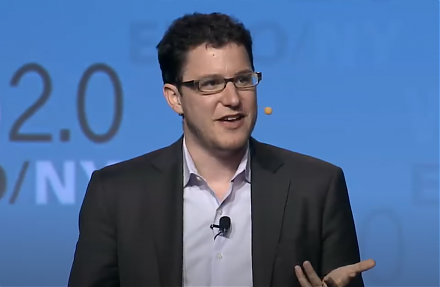

2020-06-03 09:31:00 Wed ET
technology data lean startup team work streams distinctive capabilities value creation customer-centric metrics flywheel team dynamism competitive advantages iterative continuous improvements agility growth core competences reinvention disruptive innovation megatrends blue ocean product-market fit minimum viable products niche
Lean enterprises often try to incubate disruptive innovations with iterative continuous improvements and inventions over time.
Trevor Owens and Obie Fernandez (2014)
The lean enterprise: how corporations can innovate like startups
In this book, Trevor Owens and Obie Fernandez show that lean enterprises need to embrace disruptive innovations for better consumer value creation. At the same time, it can be difficult for these lean enterprises to integrate disruptive innovations into legacy brands and key sustainable innovations. By building small independent innovation colonies with lean startup methods, these enterprises can capture fresh products, services, and solutions in the early stages of the usual business lifecycle. As soon as lean enterprises attain iterative continuous feature enhancements over time, it is important for these lean enterprises to find the best product-market fit. In essence, this product-market fit can empower lean enterprises to unlock consumer value and capital for future feature enhancements and disruptive innovations.
Lean enterprises must build new innovation colonies or organizational cultures that comprise design studios, startup incubators, development departments, or capital funds. These business units often focus on aligning high-risk ideas and merits with new blue-ocean markets in search of a niche product-market fit. Overall, innovation colonies can often serve as both autonomous and independent business units with entrepreneurial talents, middle managers, senior technical experts, and other team contributors. These small and lean business teams move fast, fail forward, and so learn from their past mistakes, failures, trials and errors, and groupthink biases etc. Smart idea meritocracy helps stimulate the genesis of disruptive innovations.
Innovation colonies should implement the lean startup method to design new blue-ocean disruptive innovations. The lean startup method heavily relies upon scientific experimentation for business leaders to identify new customers and their essential needs and wants. Hence, lean enterprises often run data-driven tests to meet new consumer needs and wants with new products, services, and solutions. A healthy combination of internal research processes, mergers and acquisitions, and startup investments can often contribute to both the design and development of disruptive technological advances with exponential growth and early technology adoption.
Lean enterprises set up smart innovation colonies and then apply the lean startup method to nurture new business ideas in order to attain a niche product-market fit.
Many large business organizations strive to be innovative, but it can be difficult to attain disruptive technological advances because these organizations often cannot integrate disruptive innovations into their legacy brands and sustainable processes. Lean enterprises should hence set up small independent innovation colonies with lean startup implementation to nurture fresh ideas to achieve a product-market fit.
In the modern competitive business landscape, the Internet, mobile devices, social network platforms, and cloud services all contribute to more efficient mechanisms of internal communication. Lean enterprises can follow some high-level principles to better adapt to the new business environment. First, lean enterprises must keep up with disruptive innovations in order to jump on new business opportunities. Key market trends and structural shifts can be quite unpredictable. For this reason, lean enterprises need to establish small independent innovation colonies to help better identify new customers, less contestable blue-ocean markets, and key competitive moats and advantages.
Second, small teams can create enormous consumer value. A small independent team of 5 to 7 subject matter experts can remain agile and flexible to move fast to accomplish a great deal. Alibaba, Amazon, Google, and Microsoft cloud software services help reduce the essential need for IT support. Facebook, Twitter, or some other social media platforms can often contribute to effective online ad campaigns. These digital services allow lean enterprises to outsource some major IT functions to some external third-party service providers in a simple, reliable, convenient, and cost-effective manner.
Third, new blue-ocean markets favor first-mover advantages. First-movers win and dominate blue-ocean markets with disruptive technological advances that serve as better substitutes for prior products and services. Speed can be a core competitive advantage. As first-movers, many lean enterprises learn essential customer needs, attract early technology adopters, and then leverage multi-channel distributions.
Fourth, lean enterprises move fast, fail forward, and learn much from past mistakes, failures, and groupthink biases. There can be a thousand failures for every success. A small number of ideas can pay off a thousand-fold, but lots of ideas may turn out to be epic failures. Lean enterprises must maintain a reasonable flow of fresh ideas with regular triangulation in order to capture the small number of ideas that become highly successful in terms of both sales and profits.
In terms of corporate structure, lean enterprises must establish small independent innovation colonies that focus on secret skunkworks projects. Skunkworks projects rely on a small team of no more than 7 technical subject matter experts who design and develop minimum viable products for subsequent iterative continuous feature enhancements. These minimum viable prototypes and their feature enhancements often shine fresh light on radical disruptive innovations.
Lean enterprises must build new innovation colonies or organizational cultures that comprise design studios, startup incubators, development departments, or capital funds. These business units often focus on aligning high-risk ideas and merits with new blue-ocean markets in search of a niche product-market fit. Lean startups can thrive because they learn and adapt to what customers want. Lean enterprises can change course on the basis of both scientific experiments and iterative continuous enhancements. It is important for lean enterprises to pull the plug at the right time. These lean enterprises eventually identify and discover a niche product-market fit for a critical mass of early technology adopters. As user growth rises exponentially beyond the inflection point, lean enterprises can scale up premium membership to integrate disruptive tech advances into legacy brands and sustainable innovations.
Lean enterprises apply prescient business insights into the next innovation thesis that helps identify both new customers and emergent blue-ocean markets.
Thanks to its inventor Eric Ries (the solo author of the book Lean Startup), the lean startup strategy operates in terms of sprints (or short product design cycles). These sprints rely on a robust *build-measure-learn* customer feedback loop as the team tests and refines the minimum viable product with iterative continual improvements to finally reach a niche product-market fit. As a thousand-mile journey begins with the first step, many lean enterprises first formulate the innovation thesis or problem hypothesis. This thesis states that new ideas must solve a current specific problem in a consumer-centric way. As the skunkworks team of disruptive innovators builds the first few prototypes, the team measures incremental progress toward the best minimum viable product. Through iterative continuous product enhancements, the skunkworks team learns specific functional features and elements that collectively satisfy new customer needs and wants.
The skunkworks team should identify the riskiest assumptions. These assumptions reflect the beliefs, tastes, and preferences behind the major innovation thesis. It is important for the smart team of disruptive innovators to first test these assumptions for the early resolution of uncertainty. After the skunkworks team tests and refines numerous prototypes through iterative continual improvements and product design metrics, the best minimum viable product overcomes the riskiest assumptions and obstacles to help identify target customers. Cause-and-effect relations often shine fresh light on the most receptive customers, their essential needs and wants, and their core jobs-to-be-done. Each customer persona serves as a fictional character that embodies the target user. It is important for lean enterprises to find the typical customer persona for target customers and other similar niche segments. The best minimum viable product must match the representative customer persona in close alignment with the core innovation thesis. Through iterative feature enhancements, data-driven scientific experimentation helps accelerate short product development cycles. From time to time, a robust *build-measure-learn* customer feedback loop sets in stone the corporate path of least resistance to disruptive tech advances.
If the data-driven business insights reject the problem hypothesis, the skunkworks team may decide to pivot in a different direction. Lean enterprises must view each strategic pivot as a new business opportunity (but not a major failure). Each pivot suggests that the skunkworks team learns lessons about new customer needs. As a result, the team reacts to that institutional knowledge with iterative improvements.
Lean enterprises seek to build minimum viable products but not full-blown products through scientific experiments and iterative trials and errors.
In order to conduct successful iterative experiments, key innovation colonies need access to customers who are similar to the typical target audiences. Key innovation colonies can approach current customers or new customers to test the innovation thesis or problem hypothesis within the broader network platform ecosystem. This ecosystem usually consists of relevant online communities, public places, or other customer networks. Before key innovation colonies start any scientific experiments, these colonies develop minimum viable products, measure their performance over time, and learn lessons from iterative continuous feature enhancements. Minimum viable products are not full-blown products, but these prototypes, mock-ups, verbal descriptions, or video demonstrations represent the most important part of the idea that innovation colonies test over many iterations to satisfy unmet consumer needs. In essence, the most important part of the idea of a new product or service reflects the most essential features, elements, and inventions.
Most innovation colonies use several metrics to predict the desirable user persona, ideal user growth, web traffic, and online footprint (or in-store footwork). The major metrics help inform disruptive innovators of the most critical aspects of the broader business model. Disruptive innovators need to assess how an incremental change in one major metric may affect the overall business model. For instance, an online business has to assess periodic incremental changes in web traffic and how these changes translate into new free signups and premium purchases over time. Overall, the broader business model embeds actionable metrics and insights that show the customer journey. Disruptive innovators should focus on how most customers buy products and services as new solutions to specific problems. It is important for key innovation colonies to find out and then explain why most customers buy products and services to perform specific jobs-to-be-done.
Key innovation colonies should populate the broader business model with numbers and forecasts that reflect the ideal case for each viable venture. As these colonies collect real-world data, all team members must compare the ideal case with actual sales and profits to assess whether the current venture can reach viability. In each sprint, all team members add a new feature or improve an extant one to measure customer satisfaction. Once these team members analyze the major metrics from the sprint, team members decide whether their core innovation colonies persevere, pivot, or abandon the idea.
Lean startup mergers and acquisitions can empower disruptive innovators to gain access to cutting-edge technology. Disruptive innovators seldom have capacity to develop this new technology on their own. Through mergers and acquisitions, most disruptive innovators can often apply the new technology to rocket lean enterprises ahead of competitors in new and less contestable blue-ocean markets.
Lean enterprises should acquire startups and their unique cutting-edge technology early in their lifecycles. In this cost-effective way, disruptive innovators actively look for unproven startups that fit the core innovation thesis. As a consequence, startup mergers and acquisitions often empower lean enterprises to reach a niche product-market fit when the best minimum viable product becomes bigger than the sum of the parts.
Lean enterprises must build new innovation colonies or organizational cultures that comprise design studios, startup incubators, development departments, or capital funds. These business units often focus on aligning high-risk ideas and merits with new blue-ocean markets in search of a niche product-market fit. Overall, innovation colonies can often serve as both autonomous and independent business units with entrepreneurial talents, middle managers, senior technical experts, and other team contributors. These small and lean business teams move fast, fail forward, and so learn from their past mistakes, failures, trials and errors, and groupthink biases etc. Smart idea meritocracy helps stimulate the genesis of disruptive innovations.
Innovation colonies should implement the lean startup method to design new blue-ocean disruptive innovations. The lean startup method heavily relies upon scientific experimentation for business leaders to identify new customers and their essential needs and wants. Hence, lean enterprises often run data-driven tests to meet new consumer needs and wants with new products, services, and solutions. A healthy combination of internal research processes, mergers and acquisitions, and startup investments can often contribute to both the design and development of disruptive technological advances with exponential growth and early technology adoption.
This analytic essay cannot constitute any form of financial advice, analyst opinion, recommendation, or endorsement. We refrain from engaging in financial advisory services, and we seek to offer our analytic insights into the latest economic trends, stock market topics, investment memes, personal finance tools, and other self-help inspirations. Our proprietary alpha investment algorithmic system helps enrich our AYA fintech network platform as a new social community for stock market investors: https://ayafintech.network.
We share and circulate these informative posts and essays with hyperlinks through our blogs, podcasts, emails, social media channels, and patent specifications. Our goal is to help promote better financial literacy, inclusion, and freedom of the global general public. While we make a conscious effort to optimize our global reach, this optimization retains our current focus on the American stock market.
This free ebook, AYA Analytica, shares new economic insights, investment memes, and stock portfolio strategies through both blog posts and patent specifications on our AYA fintech network platform. AYA fintech network platform is every investor's social toolkit for profitable investment management. We can help empower stock market investors through technology, education, and social integration.
We hope you enjoy the substantive content of this essay! AYA!
Andy Yeh
Chief Financial Architect (CFA) and Financial Risk Manager (FRM)
Brass Ring International Density Enterprise (BRIDE) © 2013-2023
Do you find it difficult to beat the long-term average 11% stock market return?
It took us 20+ years to design a new profitable algorithmic asset investment model and its attendant proprietary software technology with fintech patent protection in 2+ years. AYA fintech network platform serves as everyone's first aid for his or her personal stock investment portfolio. Our proprietary software technology allows each investor to leverage fintech intelligence and information without exorbitant time commitment. Our dynamic conditional alpha analysis boosts the typical win rate from 70% to 90%+.
Our new alpha model empowers members to be a wiser stock market investor with profitable alpha signals! The proprietary quantitative analysis applies the collective wisdom of Warren Buffett, George Soros, Carl Icahn, Mark Cuban, Tony Robbins, and Nobel Laureates in finance such as Robert Engle, Eugene Fama, Lars Hansen, Robert Lucas, Robert Merton, Edward Prescott, Thomas Sargent, William Sharpe, Robert Shiller, and Christopher Sims.
Follow AYA Analytica financial health memo (FHM) podcast channel on YouTube: https://www.youtube.com/channel/UCvntmnacYyCmVyQ-c_qjyyQ
Follow our Brass Ring Facebook to learn more about the latest financial news and fantastic stock investment ideas: http://www.facebook.com/brassring2013.
Free signup for stock signals: https://ayafintech.network
Mission on profitable signals: https://ayafintech.network/mission.php
Model technical descriptions: https://ayafintech.network/model.php
Blog on stock alpha signals: https://ayafintech.network/blog.php
Freemium base pricing plans: https://ayafintech.network/freemium.php
Signup for periodic updates: https://ayafintech.network/signup.php
Login for freemium benefits: https://ayafintech.network/login.php
If any of our AYA Analytica financial health memos (FHM), blog posts, ebooks, newsletters, and notifications etc, or any other form of online content curation, involves potential copyright concerns, please feel free to contact us at service@ayafintech.network so that we can remove relevant content in response to any such request within a reasonable time frame.
2020-06-24 09:32:00 Wednesday ET

Several business founders and entrepreneurs take low risks with high potential rewards to buck the conventional wisdom. Renee Martin and Don Martin (2010
2017-03-21 09:37:00 Tuesday ET

Trump and Xi meet in the most important summit on earth this year. Trump has promised to retaliate against China's currency misalignment, steel trade
2019-09-05 09:26:00 Thursday ET

Yale macro economist Stephen Roach draws 3 major conclusions with respect to the Chinese long-run view of the current tech trade conflict with America. Firs
2018-02-19 08:39:00 Monday ET

Snap cannot keep up with the Kardashians because its stock loses market value 7% or $1 billion after Kylie Jenner tweets about her decision to leave Snapcha
2020-06-03 09:31:00 Wednesday ET

Lean enterprises often try to incubate disruptive innovations with iterative continuous improvements and inventions over time. Trevor Owens and Obie Fern
2017-05-19 09:39:00 Friday ET

FAMGA stands for Facebook, Apple, Microsoft, Google, and Amazon. These tech giants account for more than 15% of market capitalization of the American stock